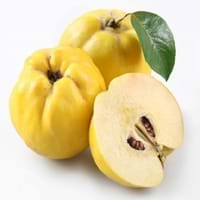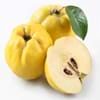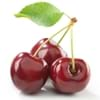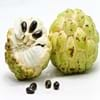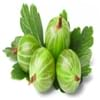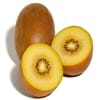Health Benefits
Cancer prevention, Cures gastro-intestinal troubles, Reduces nervous tension, Ulcer prevention
Cancer prevention, Improves eye vision, Prevents diabetes, Prevents high blood pressure
General Benefits
Anti oxidant properties, Anti-inflammatory properties, Boosts immune system, Controls blood pressure, Digestive aid, Eye care, Helps in weight loss, Improves blood circulation, Maintains healthy cholesterol level
Cures inflamed tonsils, Helps in weight loss, Maintains healthy cholesterol level
Skin Benefits
Anti-aging benefits, Reduces wrinkles
Anti-aging benefits, Protects skin from oxidative stress
Hair Benefits
Regulates hair growth
Protects hair
Allergy Symptoms
NA
Anaphylaxis, Coughing, Diarrhea, Eczema, Hives, Itching sensation in throat, Nausea, Skin Rashes, Runny nose, Sneezing, Swelling of mouth, tongue or lips, Vomiting, Wheezing
Side Effects
Allergic reaction
Heart burn
Best Time to Eat
As a snack in the late afternoon, Don't consume at night and before bed, Eat the fresh ones, avoid mixing with any other foods, don't eat after meal., Morning time (before lunch)
Along with meal, As a snack in the late afternoon, Don't consume at night and before bed, Don't eat after meal, Morning time (before lunch)
Vitamin B5 (Pantothenic Acid)
Vitamin C (Ascorbic Acid)
Vitamin E (Tocopherole)
Not Available
Vitamin K (Phyllochinone)
Not Available
Lutein+Zeaxanthin
Not Available
Phytosterol
Not Available
Calories in Fresh Fruit with Peel
Not Available
Calories in Fresh Fruit without Peel
Not Available
Calories in Frozen Form
Not Available
Not Available
Calories in Canned Form
Not Available
Type
Tree fruit
Fruit vegetable
Season
Winter
All seasons
Varieties
Meech’s Prolific, Lusitanica, Champion and Vranja AGM
Tamarillo bold gold, Tamarillo red beau, Tamarillo tango and Tamarillo teds red
Color
Green, Yellow
Orange, Red, Yellow
Inside Color
White
Creamy Yellow
Origin
Iran, South-West Asia, Turkey
South Africa
Soil Type
Loam, Well-drained
Sandy loam, Well-drained
Climatic Conditions
Warm
Rainfall, Warm
Facts about
- Due to its strong & fruity aroma, brides consumed quince to ensure "perfumed lips".
- It is also called as ‘Pear of Cydonia’, being native to Caucasus and Iran.
- They call it as the ‘golden apple’ of Greek Mythology.
- Up until 1967, tamarillos were referred to as tree tomatoes.
- The name tamarillo is derived from Maori word 'tama' which means leadership and rillo from spanish word 'amarillo' which means yellow.
Top Producer
Turkey
New Zealand
Other Countries
Algeria, Argentina, Azerbaijan, China, Iran, Morocco, Serbia, Spain, Uzbekistan
Australia, Chile, Colombia, Malaysia, Peru, Philippines
Top Importer
United States of America
United States of America
Top Exporter
Argentina
New Zealand
Botanical Name
Cydonia oblonga
Solanum betaceum
Synonym
C. vulgaris
tree tomato, genus Cyphomandra, Cyphomandra
Subkingdom
Tracheobionta
Tracheobionta
Division
Magnoliophyta
Magnoliophyta
Class
Magnoliopsida
Magnoliopsida
Subclass
Rosidae
Asteridae
Family
Rosaceae
Solanaceae
Species
C. oblonga
Solanum betaceum
Generic Group
Rose
Nightshade
Difference Between Quince and Tamarillo
We might think that Quince and Tamarillo are similar with respect to nutritional value and health benefits. But the nutrient content of both fruits is different. Quince and Tamarillo Facts such as their taste, shape, color, and size are also distinct. The difference between Quince and Tamarillo is explained here.
The amount of calories in 100 gm of fresh Quince and Tamarillo with peel is 57.00 kcal and Not Available and the amount of calories without peel is Not Available and 31.00 kcal respectively. Thus, Quince and Tamarillo belong to and category.These fruits might or might not differ with respect to their scientific classification. The order of Quince and Tamarillo is Rosales and Solanales respectively. Quince belongs to Rosaceae family and Tamarillo belongs to Solanaceae family. Quince belongs to Cydonia genus of C. oblonga species and Tamarillo belongs to Solanum genus of Solanum betaceum species. Beings plants, both fruits belong to Plantae Kingdom.
